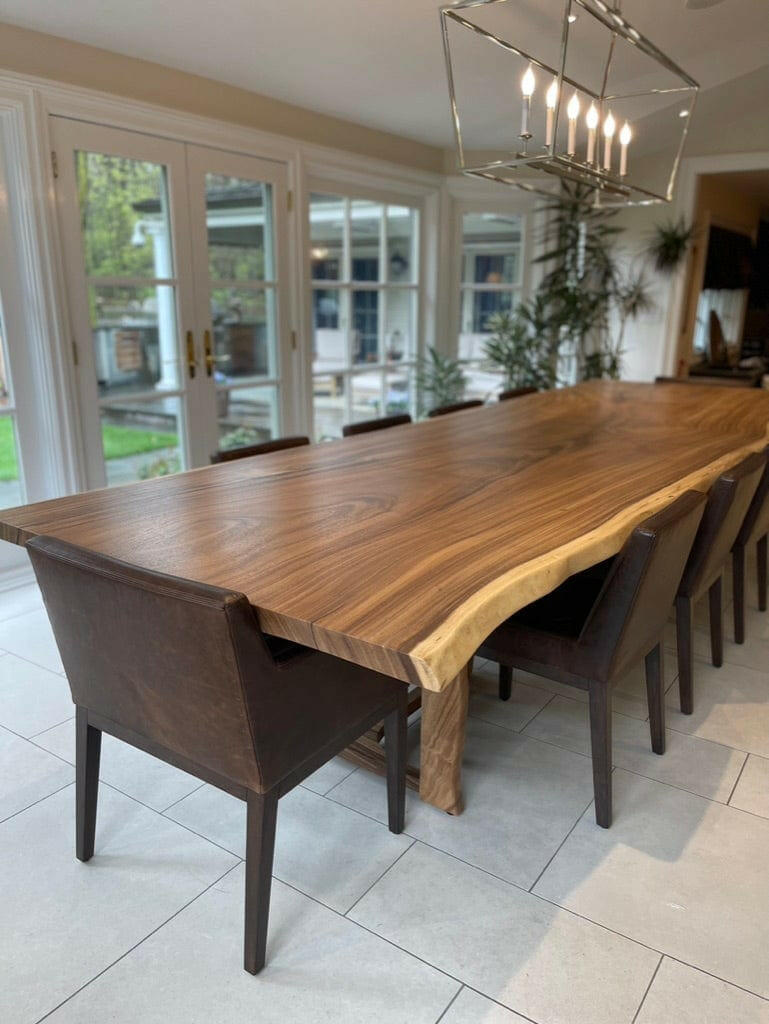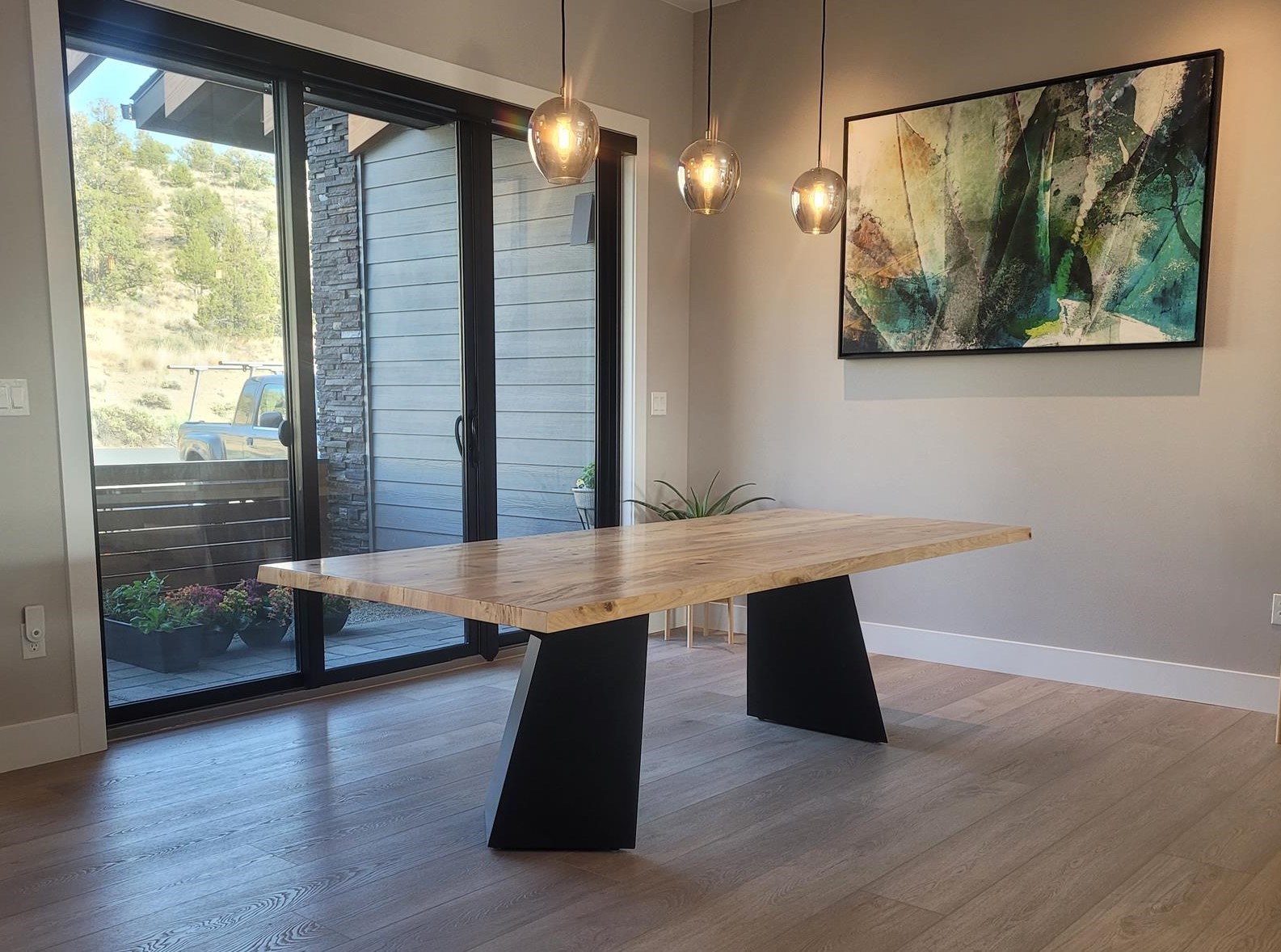Dining Room Table Legs That Incorporate Capability and Modern Layout
Dining Room Table Legs That Incorporate Capability and Modern Layout
Blog Article
Picking the Perfect Table: What Styles Work Best for Your Home?
Selecting the optimal eating table for your home can be a nuanced process that balances looks and capability. To navigate these options successfully and locate a table that truly matches your home, think about the adhering to facets in detail.
Examining Your Area
Examining the dimensions and design of your eating location is a vital initial step in selecting the ideal table. Begin by gauging the size and size of the area, making up entrances, home windows, and various other building attributes that could influence table placement. This ensures that your table not only fits but also enables comfortable movement around it.
Consider the number of people you typically captivate. A table ought to accommodate your household's daily needs while offering sufficient adaptability for periodic visitors. As a policy of thumb, designate a minimum of 24 inches of table width per person to ensure a comfy eating experience.
It's likewise important to preserve suitable clearance around the table. Ideally, there need to go to least 36 inches between the table side and wall surfaces or other furniture, enabling very easy accessibility and motion. For spaces where chairs with arms or additional storage space systems like buffets are involved, raising this clearance to 48 inches is suggested.
Illumination and atmosphere play significant duties as well. Make sure that your table straightens with existing illumination fixtures or strategy for sufficient lights options. This extensive spatial analysis assurances that your dining table not just fits physically however also integrates with your room's total functionality and visual.
Popular Table Styles

Traditional table often include luxuriant information, rounded legs, and rich wood finishes, evoking a feeling of classic sophistication. They are best for homes with traditional design or those wanting to include a touch of refinement to their eating area.
Modern dining tables prioritize simpleness and tidy lines, commonly integrating materials like glass and steel. These tables are excellent for modern areas, offering a sleek and uncluttered appearance that matches minimalist layout approaches.
Rustic dining tables, on the other hand, stress natural products and a handmade appearance - dining room table legs. They often include recovered wood and a troubled finish, developing a warm and inviting ambience. These tables work well in farmhouse-style homes or those looking for a comfortable, organic feeling
Industrial dining tables integrate basic materials such as steel and wood, usually showcasing a practical aesthetic. This design is well-suited for loft spaces or urban areas, adding a touch of sturdy charm and durability to the dining experience.
Each style uses distinct benefits, making it essential to select one that aligns with your home's general layout and your personal choices.
Material Options
When picking a dining table, the selection of material plays a vital role in figuring out both the table's visual appeals and capability. Wood, metal, glass, and composite products each deal distinct advantages and challenges, making it necessary to align the material with your home's decoration and way of living needs.
Wood is a classic and versatile option, offered in selections such as oak, walnut, and mahogany. Known for its sturdiness and heat, timber enhances both conventional and contemporary insides. It needs normal upkeep to protect against scratches and warping.
Metal tables, typically crafted from stainless-steel, light weight aluminum, or functioned iron, are commended for their modern-day allure and effectiveness. They are particularly suited for industrial or minimalist settings but can be prone to dents and may feel cold to the touch.
Glass dining tables bring an air of elegance and openness, ideal for smaller rooms as they develop an illusion of more room. While easy to clean, glass can be susceptible to smudges and requires cautious dealing with to stay clear of chips and splits.
Composite materials, such as MDF and plywood, deal affordable and adjustable options, though they might lack the durability Learn More Here of natural products. Picking the appropriate product ensures your dining table is both a functional property and an aesthetic pleasure.
Shape and Dimension Factors To Consider
After establishing the proper product for your dining table, the following consideration is picking the best form and size to fit your space. On the other hand, rounded tables promote a feeling of intimacy and are exceptional for smaller dining locations, encouraging discussion by removing corners and making every person feel similarly consisted of.
As a guideline of thumb, allocate at the very least 24 inches of table width per individual to ensure comfy eating. Additionally, take into consideration the table's clearance room: there need to be at least 36 inches in between the table side and the walls or other furnishings. Expanding tables offer flexibility if you frequently organize bigger celebrations, giving added seats when needed without occupying extra room daily.
Matching Your Style
Choosing an eating table that harmonizes with your existing decoration is pivotal in producing a cohesive and inviting room. A sleek, minimal table with tidy lines is optimal for a modern-day home, while a vintage, ornate table fits an extra conventional setup.
Shade and material are similarly substantial. If your design includes cozy tones and natural materials, take into consideration a wooden table to enhance the natural feeling. Conversely, a glass or metal table might be better suited in a room dominated by amazing shades and commercial elements. Take note of the surface, as it needs to mirror other furniture and fixtures to preserve consistency.
A rough-hewn, reclaimed wood table can include personality to a rustic space, while a polished marble surface area can boost a lavish eating Look At This area. A well-matched dining table not just improves visual allure yet likewise enriches the total eating experience.

Verdict
Picking the optimal table demands careful consideration of area, design, materials, shape, and size (dining room table legs). Typical tables enhance classic interiors with rich wood surfaces, while modern-day tables match modern settings through glass and metal. Rustic styles introduce warmth by means of all-natural products, and commercial designs boost city environments with raw elements. Harmonizing the dining table with existing design makes sure both capability and aesthetic charm, adding to a natural and cosmetically pleasing eating location. navigate here
Report this page